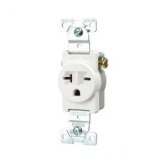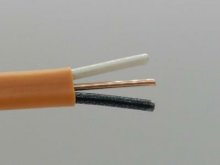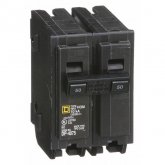Frank in Thailand
making mistakes so you don't have to...
I have 64 280AH batteries with their own BMS. How do I hook them up so that each Revo is pumping current in them?
I had a week of no sun and the Revo II was pulling current from the grid like I wanted.
I use a lot of power with all the aircondioners, lights etc. Ive seen it go up to 15kw when i was using just 3 units.
I Have 4 Revo II's.
Each one has its own solar array hooked up to it.
How does the power from other units go into the master unit to charge batteries?
There is no master for charging.
64 X 280Ah, probably S16 setup.
I guess you made 4 x S16, with 4 x Negative "controlled" by its own BMS.
And 4 positive.
There is absolutely no reason to not connect all 4 positives and all negative together.
Just hook them up together.
Just try to use the same length of cable between each S16.
Looking at your pictures and way you setup, you probably have the cells directly under the Revo II.
You simply parallel them after the BMS.
Each BMS still controls it's own "unit", and if one cell of that unit have a problem that requires the BMS to act, you have no longer 64 cells connected, but 48.
(The BMS disconnect 16 of the whole set)
I assume you that you have BMS that have mosfet switch to turn of the connection between inverter/MPPT and battery
As it's hybrids, I assume you use common port BMS.
(One port for charge and discharge)
Each Revo II does its own thing.
It's important to fine-tune the Revo II to have matching settings.
They all might see slightly different voltage readings from the total battery.
Unit one sees 53.2 volt, unit 2 sees 53.2, unit 3 sees 53.4 and unit 4 sees 53.3v.
Slight difference, but important to set at the battery voltage settings.
The standard "lithium" settings for the Revo are higher then I prefer.
To get the Revo in Lithium settings, you first set each unit into lithium battery option.
Safe and exit the settings menu.
I personally like to reboot to make sure it's saved.
After this you go to user Battery setting, and set the charging voltage.
For me I have both the same at 54.7v
That works for me.
When the sun goes down and the battery starts to get used, the voltage indication shows about 85-90% charged.
I have my cut off voltage relative low.
The few times I might get to that low level, I probably need it, and draining to 2.5 (or below, as long as you stay above 2v per cell) is not really destructive. Under 2 volt you lose a few cycles.
Over 3.65... you lose a lot of cycles..
Way more destructive.
Anyways, those are mine settings.
The Revo II is on paper capable of 4500 watt solar panels, max open voltage 450v.
If you feed it more then 5200 watt it goes into protect mode, waits some time to cool down and restarts the MPPT.
I can't advise to feed it over 4500W, as long as you stay under 5000W.. you are normally in the clear.
You probably have seen the maximal charge settings of solar and grid.
Older versions of the firmware it's "limited" to, if I recall correctly, to 60A, together max 90A
Newer version can do 90A for solar.
That is the left over energy to put into the battery.
If you are using 1000 watt, andd your solar panels produce 5000 watt, you have 4000 watt to charge the battery with.
Probably +53 volts, is 75A.
The Revo II goes in steps of 10A.
Then 70A would be the best setting.
80A would push you beyond the 5200 watt..
For the battery array, once you confirmed the voltage it reads,you set the charge accordingly.
The 53.2v both have the same, like mine both at 54.7v (bulk and float)
The 53.4 would be 54.9, and the 53.3 would be 54.8v as maximal charge voltage.
It's not bad if one unit stops charging a little sooner then the others, or starts later / earlier.
It's an ongoing flow process, always in movement, never exact values.
Stopping at 85-90% works for me, and I have the crazy hope that what people write, getting the extra cycles is reality with my setup and my cells.
Even if it doesn't, I get "just" the 2500 cycles... I'm happy.
I don't need to charge to 100%.
For imbalance, yes,from time to time probably.
I use active balancer, same as the active Balancer BMS, without the BMS part.
I now use the DIYBMS.









